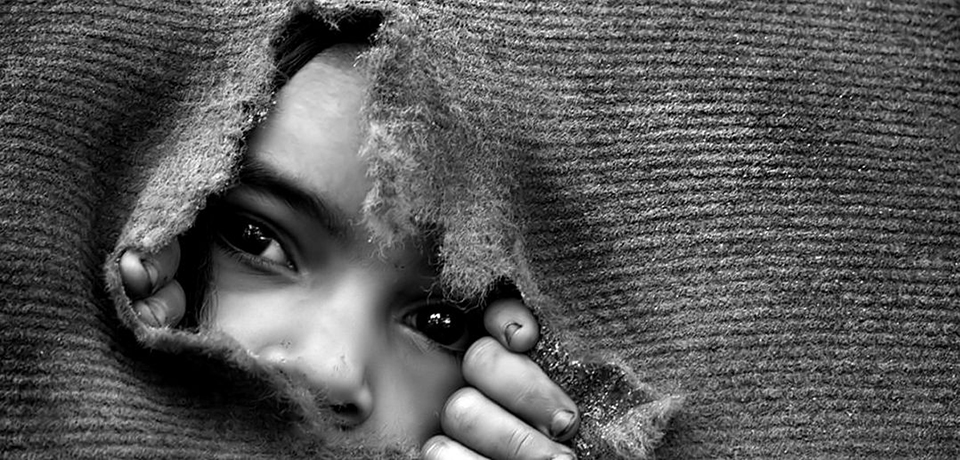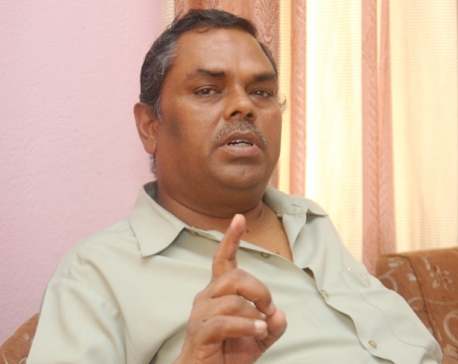
OR


Siromani Dhungana
Siromani is associated with Republica daily as coordinator of its Social Bureau. He is responsible for commissioning, coordinating, reporting and writing stories on various issues like migration, human rights, health, education, and other social issues. He has been working as a journalist for 10 years. Twitter: @ siromanidsiromanid@myrepublica.com
Successive governments have been less and less accountable and more and more extractive, hampering poverty reduction.
The concept and definition of poverty have evolved over time and so have poverty measurement methods. Today, many national policies and international instruments have come to recognize poverty as a multidimensional social phenomenon. Poverty has declined globally but challenges remain. Efforts at ending poverty should continue until not even one person is living in absolute poverty.
Nepal has made progress in reducing absolute poverty over the past few decades. According to official data, the proportion of population living in absolute poverty has halved in two decades (from 42 percent in 1996 to 21.6 percent in 2016). The government has set a target of reducing the proportion of those living below the poverty line to 17 percent by the end of 2018/19. The country now hopes to graduate from the list of Least Developed Countries (LDCs) to a developing country status by 2022.
The government’s policies and programs have acknowledged poverty as multidimensional, with priority given to personal and social betterment of the poor. Nepal’s investments in social sectors such as health, education and social security have yielded good results. In 2013, life expectancy in Nepal reached 72 years for women and 69 years for men, an average increase of 12 years over the past two decades. Nepal has made good progress in reducing maternal mortality ratio (MMR) which, according to 2015 estimate, stands at 258 per 100,000 women. Under-5 mortality has fallen to about 39 per 1,000.
Nepal’s literacy rate is 78 percent while youth literacy rate (15-24 years) is 88.6 percent. Meanwhile, primary school net enrolment ratio has reached 96.6 percent and infant mortality been reduced to 29 per 1,000 live birth, again in 2015 estimates.
Many challenges
Over the past two decades, remittance has made a strong impact on poverty reduction. But the government and policymakers seem to have few ideas on how to sustain remittance-induced progress.
There has been little effort from the government to boost the productive sector. Successive governments have failed to create jobs. Instead, they seem bent on extracting from the state. Productive resources are captured by a few powerful leaders and their kin and kith. Corruption is deeply ingrained and getting worse. Politicians are allowing goons to enter politics and capture power.
The nexus between businessmen and politicians is so strong that private sector actors have been able to capture state resources and to run syndicates and cartels, virtually in every field. Tax exemption for the powerful and tax evasion by powerful private players are rampant too. In fact, successive governments have been less and less accountable and more and more extractive. These are stumbling blocks for sustained growth and development, which are prerequisites to end poverty.
Despite lack of long-term vision and effective implementation, Nepal is not in a position to entirely avoid the issue of poverty eradication. It is a signatory to Sustainable Development Goals (SDGs), the 2030 agenda for sustainable development with 17 goals that was adopted by world leaders in 2015.
SDGs have ending poverty as their overarching objective. This is because the task of eradicating poverty in all its forms, including extreme poverty, is the greatest global challenge and indispensable for inclusive, just and peaceful societies, according to the United Nations.
As a signatory country to the SDGs, Nepal must take urgent action to end poverty. More rigorous planning is required to reach people below the food poverty line. For this the government must ensure everyone’s equal access to healthcare and education, and to housing and employment.
Meaningful and decent jobs should be created by modernizing agriculture, boosting productive sector and creating entrepreneurship-based livelihood opportunities.
Collective action needed
On October 17, the global community is marking the International Day for the Eradication of Poverty with the theme: “Answering the Call of October 17 to end poverty: A path toward peaceful and inclusive societies.”
This year’s theme highlights the values of dignity, peace, justice and inclusion. The question is not whether our government is committed to ending poverty, it is rather: who benefits from its policies and who bears the risks? We must ensure that even the poorest of the poor are reaping benefits while even the most powerful ones are forced to bear the risks.
To achieve this year’s goal, policies and practices that exploit the masses for the benefit of the rich and powerful must be discontinued. The reality is that a handful of politicians, individuals and families have monopoly over all quality goods and services. Self-examination by every policymaker and politician is required to break down existing class structures and inequalities.
The vicious circle of poverty is the common enemy of mankind. It prevents people from living decently. On this important day, policymakers and stakeholders in Nepal must recognize that people living in poverty should be at the forefront of the fight against poverty. Poor people need to be involved in planning, design and execution of activities targeting them. Transparent and accountable system, policy stability, participatory development and fair sharing of resources are needed to create a peaceful and inclusive society.
The author is a research and knowledge management professional associated with Poverty Alleviation Fund, Nepal. Views are his own.
siromanidhungana@gmail.com
You May Like This

Impeachment motion against CJ Karki is against independence of judiciary: Yadav
KATHMANDU, May 1: Chairperson of the Federal Socialist Forum, Upendra Yadav has strongly criticized the Nepali Congress and the CPN... Read More...

Infographics: Struggle against hunger and poverty in the world
Struggle against hunger and poverty in the world ... Read More...

Infographics: Struggle against hunger and poverty in the world
The world has made dramatic progress against hunger and extreme poverty in recent decade ... Read More...





Just In
- CM Kandel requests Finance Minister Pun to put Karnali province in priority in upcoming budget
- Australia reduces TR visa age limit and duration as it implements stricter regulations for foreign students
- Govt aims to surpass Rs 10 trillion GDP mark in next five years
- Govt appoints 77 Liaison Officers for mountain climbing management for spring season
- EC decides to permit public vehicles to operate freely on day of by-election
- Fugitive arrested after 26 years
- Indian Potash Ltd secures contract to bring 30,000 tons of urea within 107 days
- CAN adds four players to squad for T20 series against West Indies 'A'













Leave A Comment